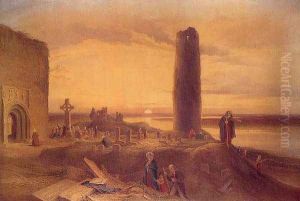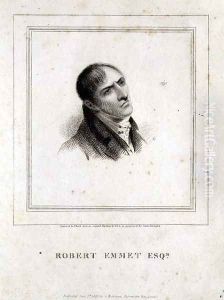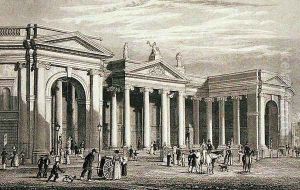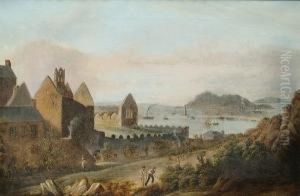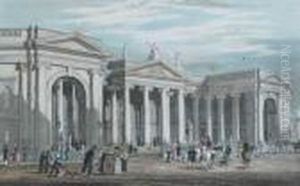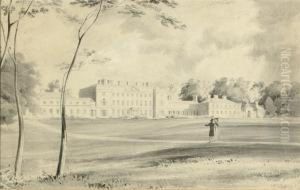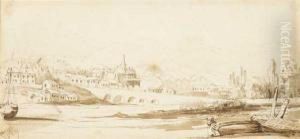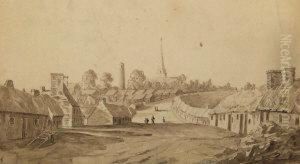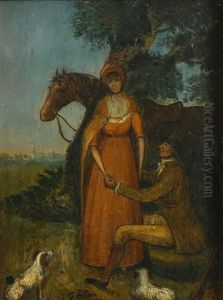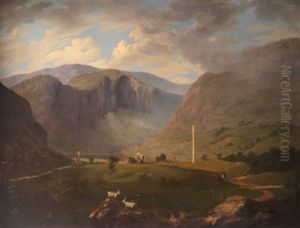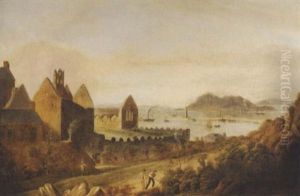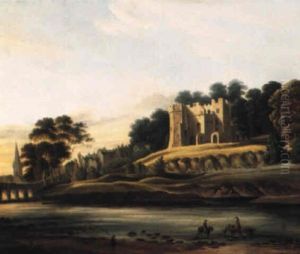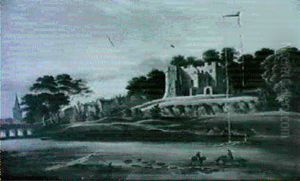George Petrie Paintings
George Petrie was an Irish painter, musician, antiquary and archaeologist, born in Dublin, Ireland on January 1, 1790. He was a pivotal figure in the Irish cultural renaissance and is best known for his work in the study and preservation of Irish antiquities, particularly the early Christian monuments. Petrie was the son of a portrait artist and engraver, James Petrie, which provided him with an environment enriched with artistic influence from a very young age.
Petrie’s artistic talents became evident early in his life, and he was initially trained by his father. He later studied at the Dublin Society's schools, where he focused on landscape painting and drawing. Although he was a skilled painter, with his works exhibited at the Royal Hibernian Academy, Petrie's interests increasingly turned towards archaeology and the preservation of Ireland's ancient monuments.
Throughout his life, Petrie was deeply engaged in the collection of Irish traditional music, and he is credited with the collection of numerous traditional Irish airs and melodies. His involvement in music also extended to playing the violin and publishing a collection of Irish music in 1855 titled 'The Petrie Collection of the Ancient Music of Ireland'.
Petrie's most significant contribution to Irish culture and history was his work in archaeology, which had a lasting impact on the field. In 1833, he was employed by the newly established Royal Irish Academy to lead an archaeological survey of Ireland. His meticulous recording and study of Irish round towers, high crosses, and ancient churches culminated in his most famous work, 'The Ecclesiastical Architecture of Ireland', which was published in 1845. This seminal work is considered a foundational text in the study of early Irish architecture and won him the gold medal of the Royal Irish Academy.
Petrie became the president of the Royal Irish Academy in 1857 and held the position until his death. His passion for Irish history and culture significantly contributed to the preservation of Ireland's past. He was also involved in other cultural projects, such as the Ordnance Survey of Ireland, where he worked on the place names section, connecting local folklore and history to the Irish landscape.
George Petrie passed away on January 17, 1866, in Dublin, leaving behind a legacy of cultural preservation and a body of work that continues to be a reference for scholars of Irish history and culture. His efforts have immortalized him as a key figure in the Irish cultural renaissance and a protector of Ireland's heritage.
